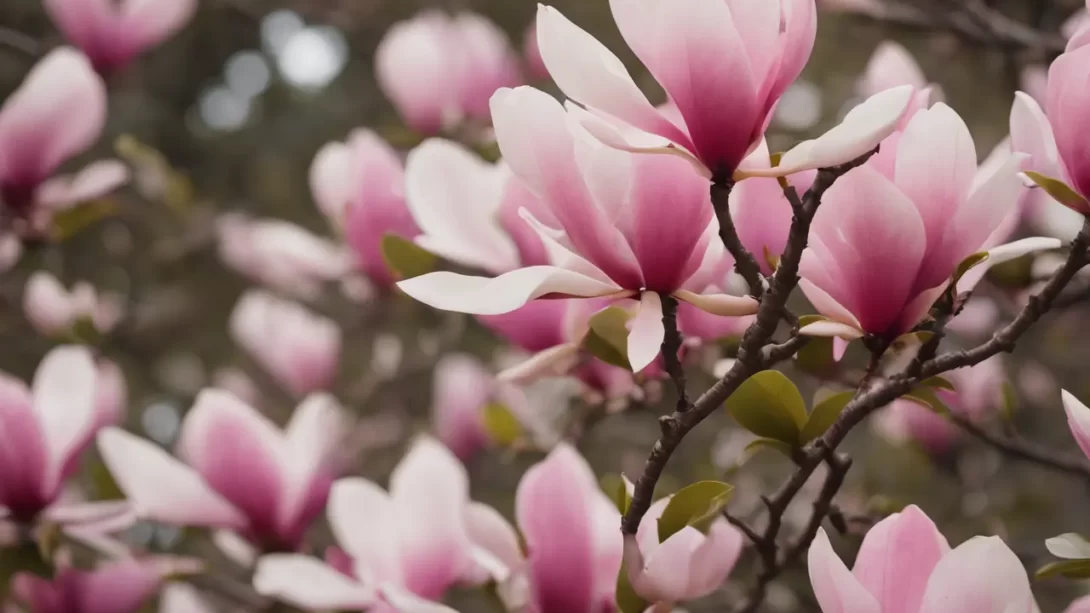Magnolia trees, with their grandeur and striking blooms, are a splendid sight in any landscape. A common query about these trees concerns their foliage: do magnolia trees lose their leaves? Understanding whether magnolia trees are deciduous or evergreen is essential for gardeners and tree enthusiasts.
Overview of Magnolia Trees
Magnolias are known for their large, fragrant flowers and broad leaves. These trees can vary significantly in size and appearance, from small shrubs to towering trees. The family of magnolia trees is diverse, encompassing over 200 species. This diversity includes both deciduous trees, which shed their leaves annually, and evergreen varieties, which retain their foliage year-round.
Deciduous vs. Evergreen Magnolias
To understand leaf shedding in magnolias, it’s crucial to distinguish between deciduous and evergreen species. Deciduous trees, like the Magnolia grandiflora, lose their leaves each year, usually in autumn. This process is part of their natural cycle to conserve energy during the colder months. In contrast, evergreen magnolias, such as the Southern magnolia (Magnolia grandiflora), retain their leaves throughout the year. They shed their leaves sporadically and not all at once, which often goes unnoticed.
Leaf Shedding in Deciduous Magnolias
Deciduous magnolias, such as the Saucer Magnolia (Magnolia x soulangeana) and Star Magnolia (Magnolia stellata), undergo a distinct leaf shedding process annually. As the days shorten and temperatures drop in autumn, these trees prepare for dormancy. The chlorophyll in the leaves breaks down, revealing beautiful fall colors before the leaves eventually fall off. This process is a survival strategy, allowing the trees to conserve water and energy during the colder, less hospitable months of winter.
Evergreen Magnolias and Leaf Retention
Evergreen magnolias maintain their leaves throughout the year, but this doesn’t mean they never lose leaves. Unlike their deciduous counterparts, evergreen magnolias, such as the popular Southern Magnolia, shed their leaves gradually. Old leaves are replaced with new growth, so the tree remains green and vibrant throughout the year. This continuous leaf shedding can sometimes go unnoticed due to the staggered nature of the process.
Factors Influencing Leaf Shedding in Magnolias
Several factors can influence leaf shedding in magnolia trees, regardless of whether they are deciduous or evergreen. Environmental factors such as temperature, light, and water availability play significant roles. For example, an unusually dry season might prompt a magnolia tree to shed leaves more than usual as a stress response. Similarly, unseasonably warm temperatures in late fall can delay the leaf shedding process in deciduous magnolias.
Care and Maintenance of Magnolia Trees
Proper care and maintenance of magnolia trees are essential for their health and longevity, and this includes understanding their leaf shedding patterns. For deciduous magnolias, it’s important to provide adequate water and nutrients during their growing season to prepare them for the dormant period. Mulching can help retain soil moisture and provide insulation during colder months.
For evergreen magnolias, consistent care throughout the year is key. They benefit from regular watering, especially in dry periods, to prevent stress-induced leaf shedding. Pruning should be done sparingly and ideally after the blooming season to maintain shape and remove any dead or diseased branches.
Seasonal Care Differences
Seasonal care for magnolia trees varies between the deciduous and evergreen varieties. Deciduous magnolias may require more cleanup during the fall as they shed their leaves, while evergreen magnolias might need more attention in the summer to ensure they are adequately hydrated.
In both cases, it’s important to monitor for signs of disease or pest infestations, which can affect the health of the tree and its foliage. Regular inspections and timely interventions can keep magnolia trees thriving for years.
Conclusion
In conclusion, magnolia trees, whether deciduous or evergreen, have specific leaf shedding patterns that are integral to their survival and growth. Understanding these patterns is crucial for proper tree care and maintenance. By providing the right conditions and care tailored to their specific needs, gardeners can enjoy the year-round beauty and elegance of magnolia trees, whether it’s in the form of stunning blooms or lush, green foliage. As with all aspects of gardening, appreciating and working with the natural cycles of plants leads to a more rewarding and successful gardening experience.



